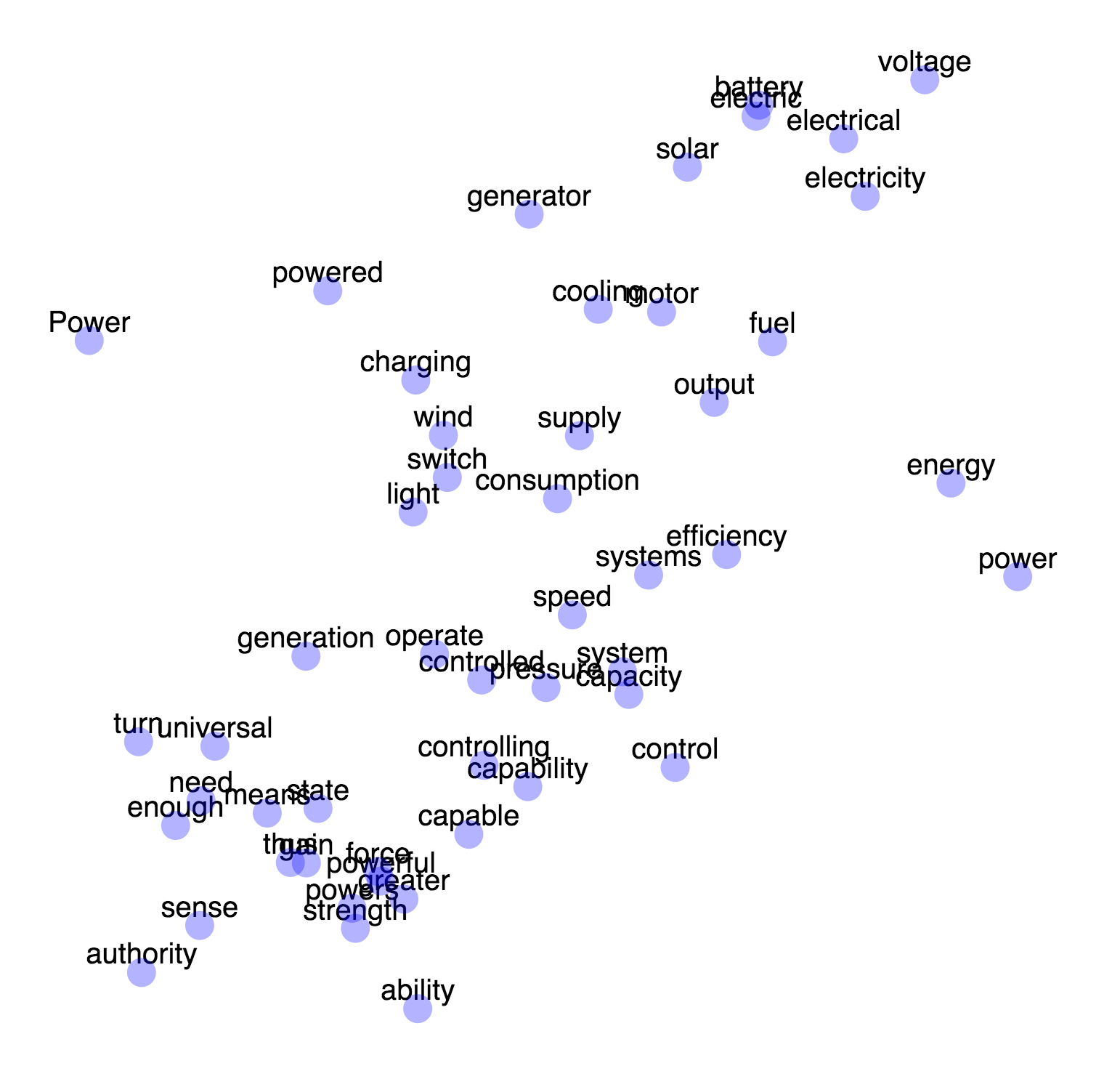sudo pip install numpy scipy scikit-learn annoy
Arguments:
-h, --help show this help message and exit
--glove GLOVE filename of word embedding data file or serialized
GloveService. If the filename ends with .txt, it's
interpreted as word embedding data file, otherwise two
files are looked for, filename.ann and filename.json.
This argument is mandatory.
--port PORT port of service.
--globalProjection use a single SVD for the whole dataset instead of always
building it from local data. Can be overridden with
/glove/?q=query&globalProjection=0
Example:
python server.py --glove glove.840B.50k.300d.txt --port 8080
See below for details about where to get such data files from.
After starting the server, please wait until the Service has started. logline appears.
Click the below link, and click on some blue circles:
You can start from any given word:
This is how it looks like, although without the fancy D3.js tweening:
There's an lp=1 argument which overrides the server-side global SVD projection feature.
Instead of working with a global 2D embedding created at startup (see --globalProjection),
we create a 2D embedding just for the neighboring words:
Behind the scenes, the Javascript (D3.js) frontend communicates with a service that takes words, and provides 2D coordinates for the words closest to the input word. This service can be directly inspected:
http://delight.prez.is:8080/glove/?q=cica&limit=5
->
{
"objects": [
[
"cica",
3.5561084652545678,
1.7004425480123986
],
[
"macska",
4.0474276933206355,
-0.17621523127759312
],
[
"kutyus",
3.7342534819952573,
2.7542156028602602
],
[
"eb",
4.5188699976906124,
-1.0474205146305975
],
[
"kutya",
5.9119959213781996,
-1.8412600319736365
]
]
}
The service needs word vectors to work. The input file format is simply whitespace-delimited, each line starting with a word and continuing with a real word embedding vector.
For convenience, I've assembled a few datasets, you can grab them from here:
# English dataset, 10k most frequent words, dimension 300.
wget ftp://ftp.mokk.bme.hu/User/daniel/glove/glove.840B.10k.300d.txt
# The same dataset with the 50k most frequent words.
wget ftp://ftp.mokk.bme.hu/User/daniel/glove/glove.840B.50k.300d.txt
# Same dataset, 250k words. This takes a significant amount of time to index.
wget ftp://ftp.mokk.bme.hu/User/daniel/glove/glove.840B.250k.300d.txt
# Hungarian dataset, 200k words, dimension 200.
wget ftp://ftp.mokk.bme.hu/User/daniel/glove/glove-hu.200k.200d.txt
The English datasets were directly based on the Glove datasets, like this:
wget http://www-nlp.stanford.edu/data/glove.42B.300d.txt.gz
The Hungarian dataset was created by Kata Gabor and David Takacs. Thanks a lot! The filename is my misnomer, the dataset was created using word2vec.
